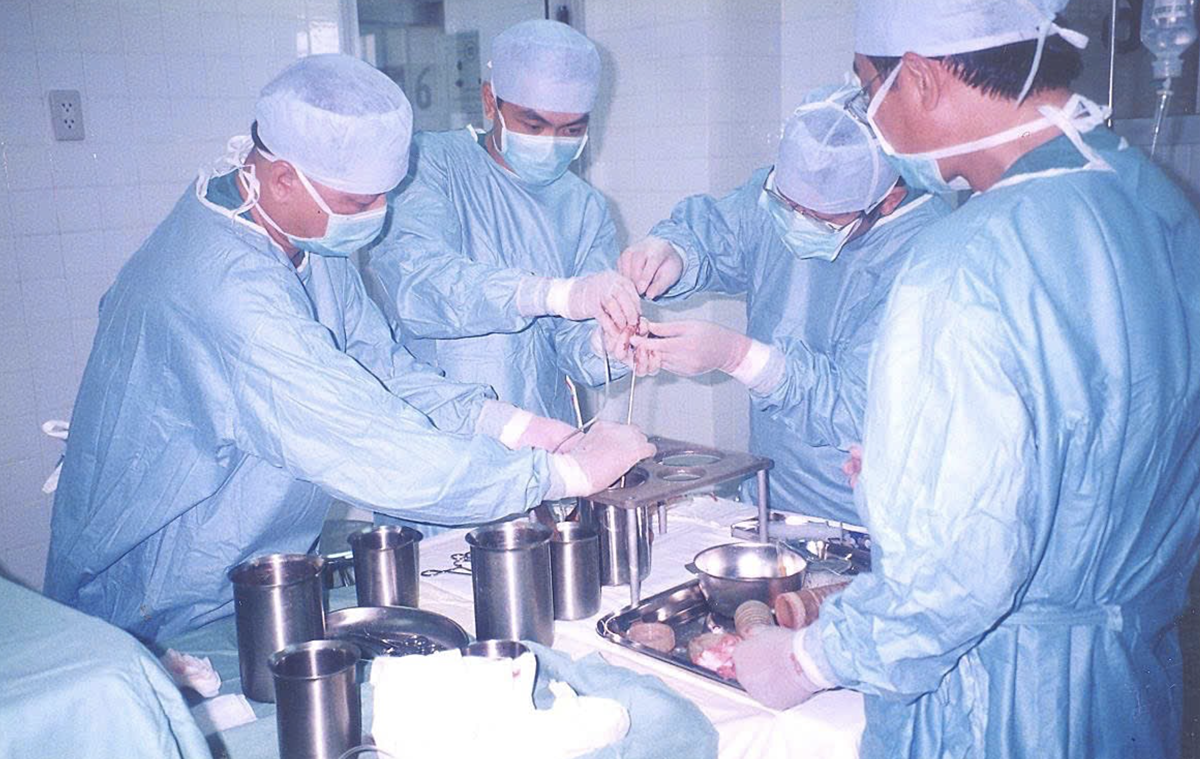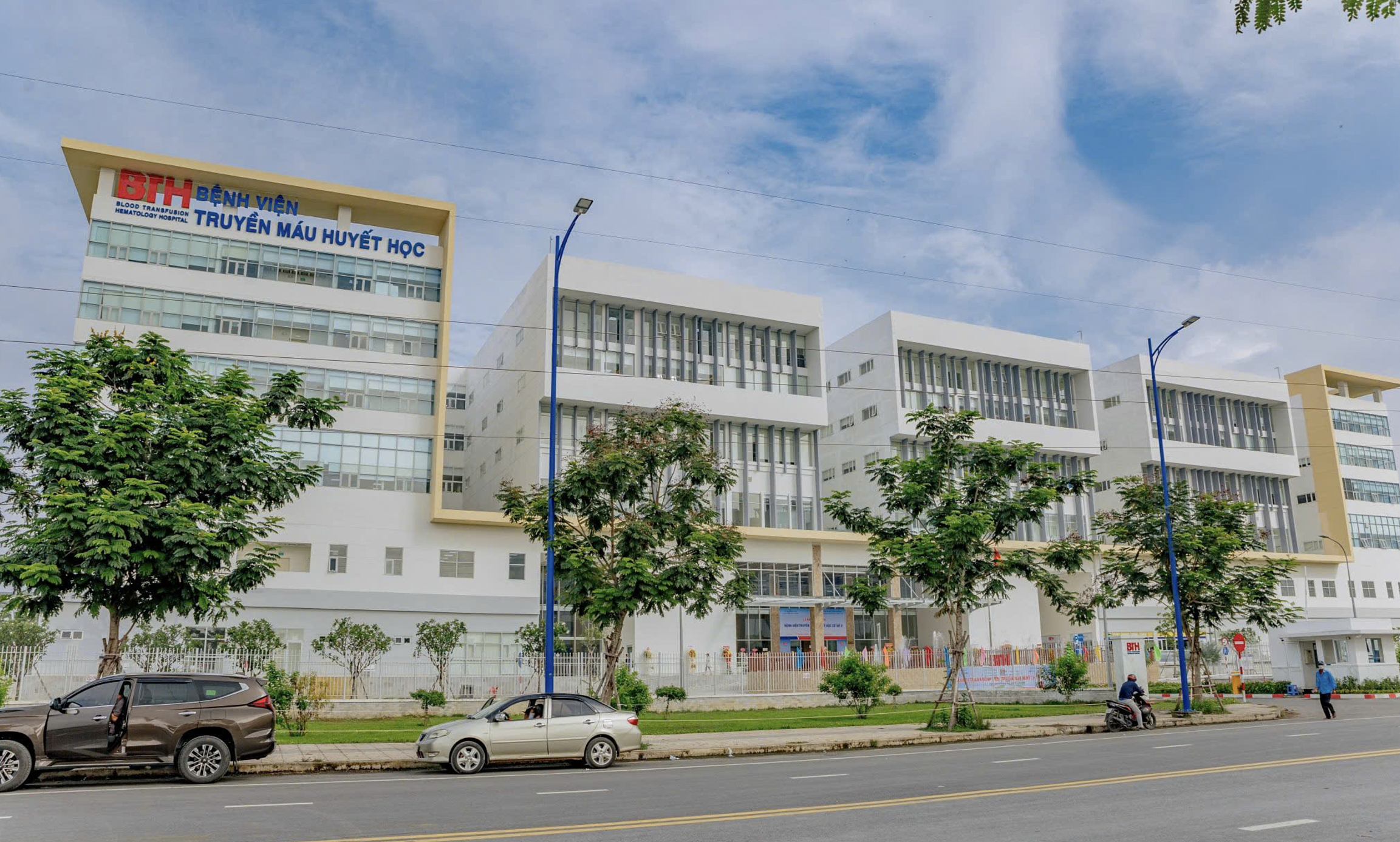Originally the National Blood Transfusion Institute (under the Saigon regime), the facility was renamed the Blood Transfusion Institute after the country's reunification in 1975. Five years later, it became the Ho Chi Minh City Blood Transfusion and Hematology Center. In 2002, it was designated as the Ho Chi Minh City Blood Transfusion and Hematology Hospital, a leading specialized hospital and the final referral center for the southern region, and one of the top hospitals nationwide in blood transfusion and hematology.
In its early days after reunification, the institute had only 36 staff members, including one doctor and four pharmacists, focusing on receiving, preparing, and distributing blood to hospitals in the city, said Dr. Phu Chi Dung, director of the hospital, at the 50th-anniversary celebration on 11/7, also marking 30 years since the first stem cell transplant in Vietnam.
A major milestone was reached on 12/5/1990 with the establishment of a 30-bed hematology treatment unit, staffed by 6 doctors and 10 nurses. This marked the nation's first dedicated hematology department. Over five years later, drawing on experience from Japan and Taiwan, the institute performed Vietnam's first bone marrow transplant, becoming the country's first bone marrow transplant center and ushering in a new era in hematological treatment.
The first bone marrow transplant recipient in Vietnam was a 21-year-old man with acute myeloid leukemia. He received a stem cell transplant from his sister. This was a haploidentical HLA transplant (where the donor's stem cells are only half-matched to the patient), more complex than an autologous transplant using the patient's own cells. After the transplant, the young man recovered, married, had two children, and remains healthy today.
Professor Tran Van Be, the institute's first director, who led the transplant, recalled the numerous challenges and shortages they faced while pioneering this technique. "Even bone marrow aspiration needles were unavailable then; we had to adapt those used in veterinary medicine," he said.
Building on this success, the hospital continued to lead in other complex stem cell transplant techniques. In 2002, it performed Vietnam's first cord blood transplant, followed by other cutting-edge techniques, while also supporting other hospitals in implementing the procedure. To date, the hospital has performed around 700 transplants, the highest number in the country.
 |
The first bone marrow transplant in Vietnam at Ho Chi Minh City Blood Transfusion and Hematology Hospital, 1995. Photo: Hospital provided |
The first bone marrow transplant in Vietnam at Ho Chi Minh City Blood Transfusion and Hematology Hospital, 1995. Photo: Hospital provided
The stem cell bank is one of the three strongest areas of the Ho Chi Minh City Blood Transfusion and Hematology Hospital today. The other two are patient care, with nearly 10,000 inpatient admissions and 140,000 outpatient visits annually, and the blood bank. The blood bank currently produces over 650,000 units of blood products annually, serving all hospitals in the city and several neighboring provinces. Construction of a new facility for both banks, with significantly increased capacity, is expected to begin later this year.
Earlier this year, the hospital became the first public healthcare facility in Vietnam to achieve the internationally recognized JCI accreditation, providing international-standard treatment at Vietnamese prices. The hospital now has nearly 1,000 staff, including over 160 doctors across various specialties. It continues to develop new therapies and techniques, ensuring patients have access to world-class advancements without needing to seek treatment abroad.
 |
Ho Chi Minh City Blood Transfusion and Hematology Hospital inaugurated its new facility in 5/2022, with modern facilities and equipment. Photo: Hospital provided |
Ho Chi Minh City Blood Transfusion and Hematology Hospital inaugurated its new facility in 5/2022, with modern facilities and equipment. Photo: Hospital provided
Vice Chairwoman of the Ho Chi Minh City People's Committee, Tran Thi Dieu Thuy, commended the hospital's progress from a facility solely focused on blood collection to becoming a blood bank, a stem cell bank, and a JCI-accredited treatment center pioneering numerous complex techniques in Vietnam. She expressed her hope that the hospital, along with other major hospitals in the city, will continue to play a leading role in establishing Ho Chi Minh City as a healthcare hub for the ASEAN region.
Le Phuong












